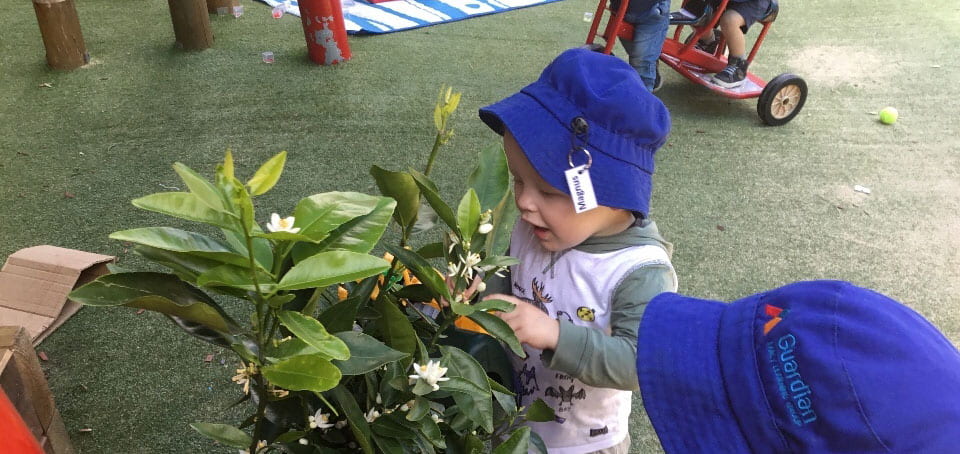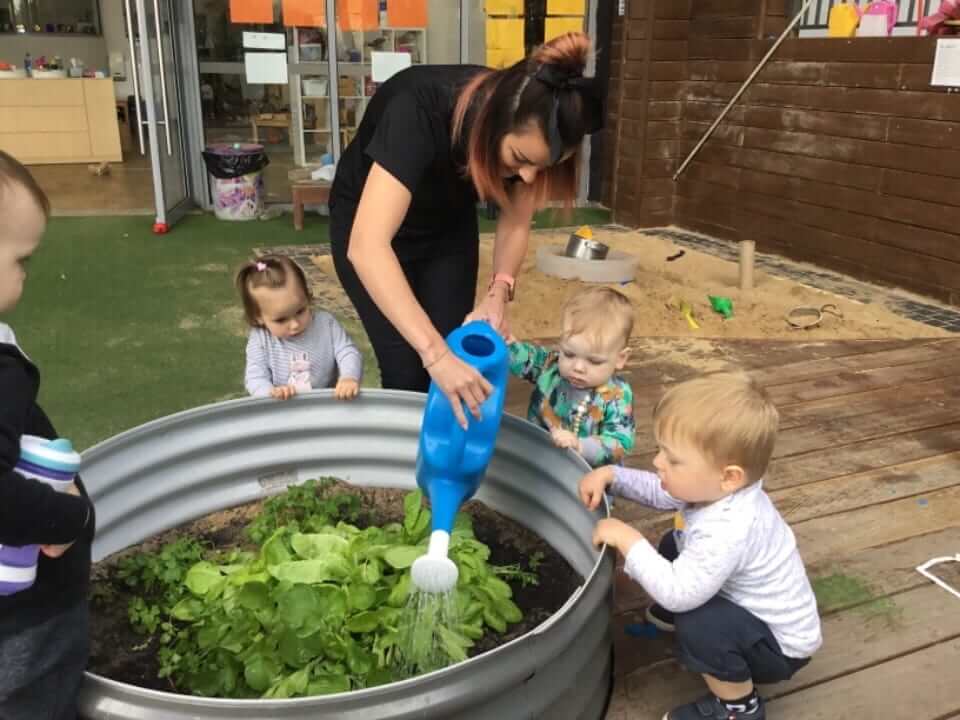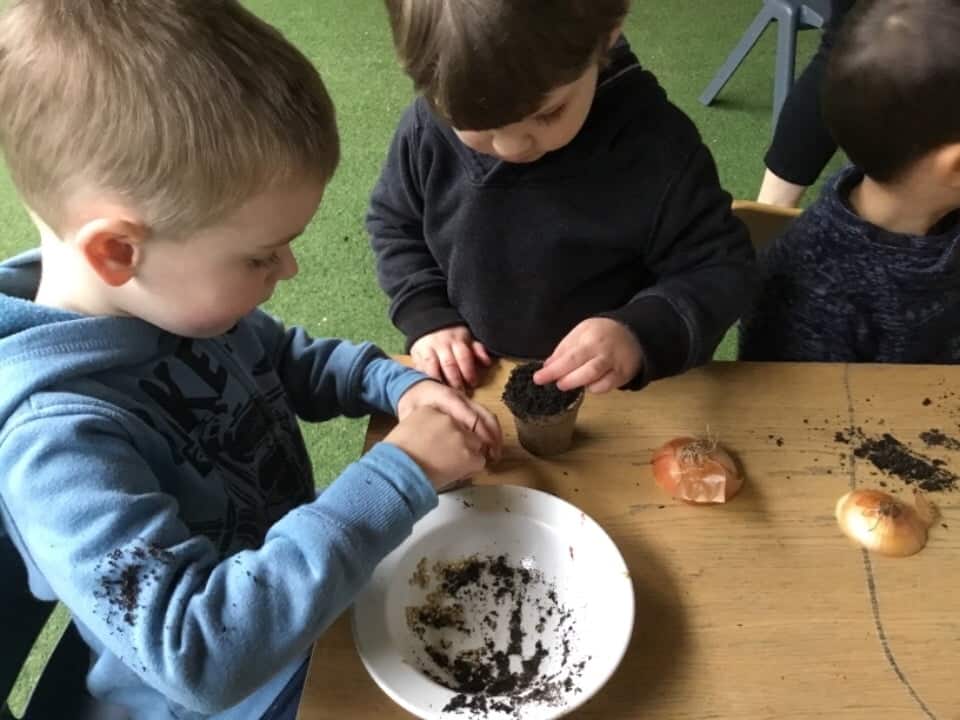Guardian Caringbah Reduce Centre’s Energy Usage by 17% in Three Months

When it comes to sustainability programs in early years education, Guardian Childcare & Education is an industry leader paving the way.
We spoke to the Sustainability Champions of Guardian Caringbah, Sophie and Jess, who have led an incredible transformation in their centre.
With the help of the children, Caringbah has introduced some simple techniques and practices that have made a huge difference to the centre’s energy usage, plant life and worm farms. We spoke with Sophie and Jess from the centre about what they’ve set up.
Can you tell us what a typical day for a sustainability champion looks like?
Modelling, leading by example and encouraging others. It’s that simple. We strive for all our Educators to share knowledge and experiences and learn from others. Sophie leads up our sustainability team, which involves sharing plans and creating processes – but really we are a team of 30 strong. Each space has an incredibly passionate Educator and when you have that many taking the lead, many more follow.

How did you decrease the energy usage at Caringbah by 17% in just three months?
Our leadership team purchased some fold-up clothing racks from Bunnings, which are inexpensive and easy to store. We made it a guideline that tea towels, face washers, bibs and other small items would always be air dried on the racks, as well as sheets when possible. The dryer is only used if urgently needed. This change alone made a huge impact on our energy usage.
In addition, our spaces have been taking advantage of natural sunlight during the day so we can switch off the classroom lights. Darker corners of the rooms are utilised for light tables and light play, which works perfectly.
We then reviewed our air conditioning usage and had a consultation with our air conditioning maintenance team. Through the meeting, we found an optimal usage for our centre and we applied some limits, such as locking temperatures and only operating at certain times of the day, to be as efficient as we could.
What about the worm farms? Do you have any tips?
Maureen, our Nursery Educator, was our resident worm farm expert for quite some time, so the preschool and toddler Educators had lessons from her on all things worms. So much of sustainability is about knowledge sharing, so we were grateful to have Maureen share her wisdom until she retired.
One of our hacks that has helped the worm farms thrive is sharing them between rooms. For example, when the nursery worms multiplied threefold, some were shared to the toddler and preschool worm farms to boost their populations. It helped a lot! We also have the Guardian guidelines for worm farms printed and keep them accessible.

What’s your secret to keeping so many indoor plants alive and thriving?
Neglect! Ha ha. Before the plant service stopped coming, we used to pick the brains of visiting experts for tips. The biggest takeaway was learning that most indoor plants really need to dry out between watering – sometimes for up to three weeks. Overwatering can be as dangerous for their survival as underwatering.
Are there any areas of the centre where you’ve been able to swap a practice or product for something more sustainable?
One of the areas we’ve begun to work on is phasing out use of playdough and replacing it with clay. Clay can be reused over and over again and comes from a much more sustainable source.
When considering the swap, we found that many of our Educators had little knowledge about clay, so we downloaded Guardian’s clay guidelines and shared them with our teams. Our Centre Manager, who has had some clay training, also ran a clay project over the course of a few weeks in the nursery space, modelling good clay practices and sharing her knowledge with Educators and children in that space. We’re looking at potentially doing a clay workshop in the near future too.

How do the children and families get involved with the centre’s sustainability practices?
Our excitement has been contagious. The blossoming gardens are a huge source of satisfaction and excitement for the children and Educators who have been involved in planting and caring for them.
This excitement is shared through Daily Journals and conversations with families about the project. From these conversations, we have had many families donate seeds and plants to add to our garden. We also offer gardening activities on family celebration days, so visiting parents and other family members can get their hands dirty in the garden.
Come harvest time, we’ve sent home vegetables, herbs and flowers with children and the enthusiasm and involvement just continued from there. Our latest development has been offering to accept any Woolies Discovery pods that families won’t use. Our garden is already looking lush from these welcome additions.
Families have generously donated containers, architectural drawings, paper, old spoons, toys, clothing, towels, and kitchen utensils. When we work on a particular project, we send a shout-out to families via StoryPark for relevant donations. Families love to feel involved, and have been very generous with what they have shared.
What types of conversations do you have around sustainability with the children?
There have been lots of conversations around fixing things rather than throwing them away. We’ve modelled and involved children in repairing books for our Book Corner on a regular basis, and invested in proper wood glue and other tools to help us maintain tables, chairs, and classroom toys and resources.
We’re trying to teach children the mindset of keeping and repairing things, as opposed to creating a culture of disposal and consumption. Ongoing reflection keeps us focused on where we can continue to change, grow and approach these topics with the children.

Has there been any pleasant surprises since embarking on your sustainability journey?
Our team is more mindful of daily practices, and enjoy knowing that they’re making a difference with things like air drying washing and turning lights off.
It has also taught us to be more open minded. Before throwing anything out, we really consider if there is another use or life for it. Unnamed children’s artworks can be reused in cutting experiences and practice. Old textas can have a new life as watercolour paints. We are always thinking and challenging ourselves to see what we can do further, and it engages the imagination daily.
The biggest surprise may have come from our germination of apple seeds. Our Centre Manager’s daughter brought in some apple seeds after some garden exploration and so we researched and researched how to germinate them. We followed a process over a four month period, we have germinated cared for what are now more than 10 apple tree saplings.
To learn more about Guardian’s sustainability practices, head here.
Looking for the right Childcare Centre for your Family?
Submit your details and a member of our Concierge Team will be in touch to discuss what you need and how we can help you experience something more than childcare.
We'll be in touch soon.






